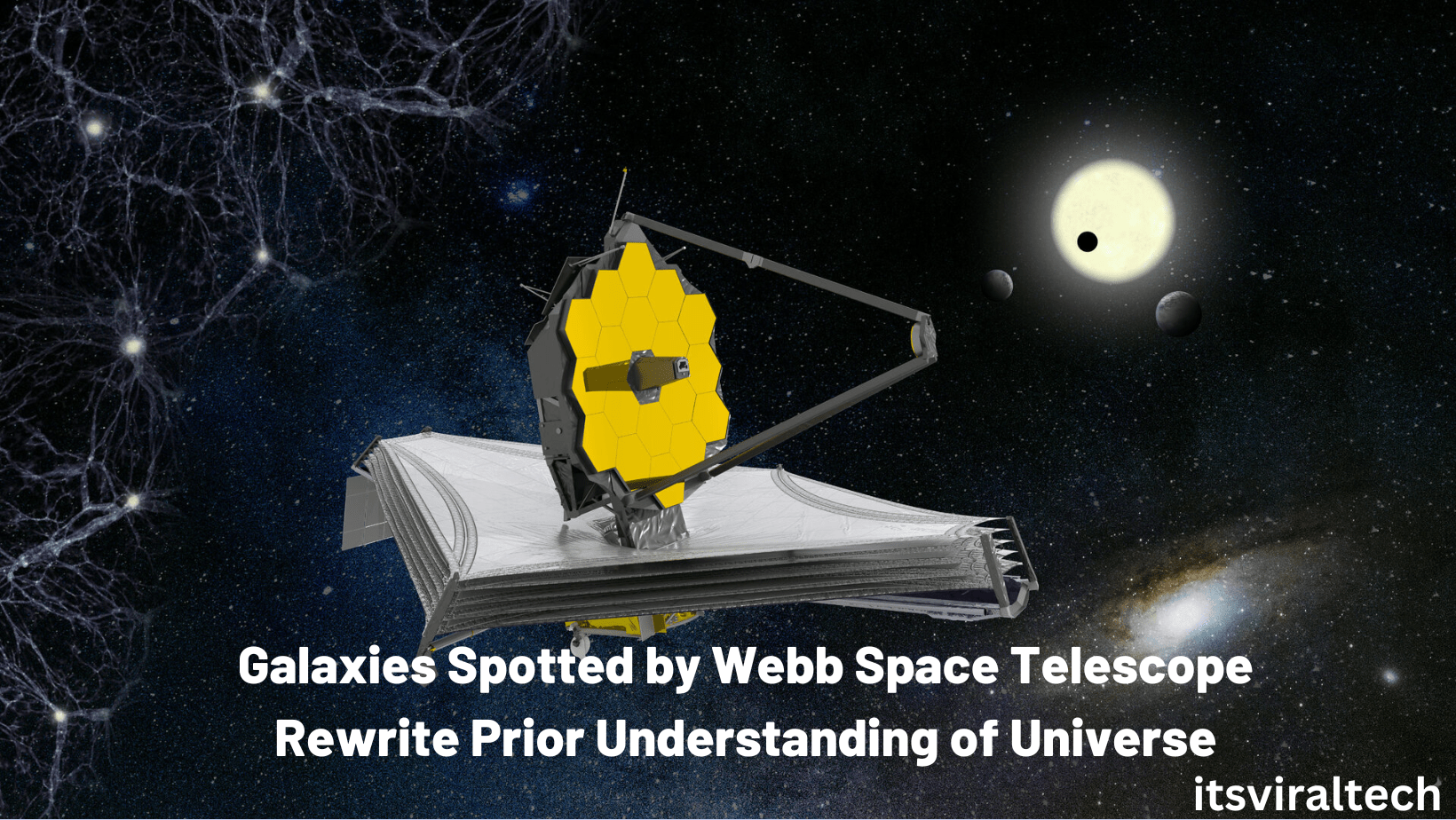James Webb space telescope boasts infrared-sensing instruments able to detect light from the most ancient stars and galaxies.
NASA’s James Webb Space Telescope has revolutionized our understanding of the early universe with its observations, revealing surprisingly large and mature galaxies crammed full of stars remarkably earlier than anticipated.
Astronomers have uncovered ancient relics of the universe, six massive galaxies that flourished in its infancy. Estimated to be roughly 540-770 million years after the Big Bang ignited our ever-expanding cosmos 13.8 billion years ago, this is a remarkable discovery given that at this point the universe was only 3 percent of its current age!
These remarkable galaxies stand out among their peers, possessing the same mass as our Milky Way but packed in an area 30 times more concentrated. It appears they differ significantly from contemporary cosmic populations.

Astrophysicist Ivo Labbe of Swinburne University, the lead author on the Nature study, described newly discovered galaxies as “radically different” and shockingly diminutive when compared to typical Milky Way proportions. In his words: “If the Milky Way were an average adult standing at 5’9″, these infant galaxies would be no taller than 3 inches – a veritable ‘freak show’, even by cosmic standards.”
Launch of James Webb Space Telescope
Webb Telescope was launched in 2021 and began collecting data in the year 2022. The findings were based upon the first dataset released by NASA July 2022 from the Webb space telescope, a telescope boasting infrared-sensing instruments able to detect light from the most ancient stars and galaxies.
Penn State astrophysicist and study co-author Joel Leja could hardly contain his surprise when he made an extraordinary discovery – galaxies forming at a rate faster than what was expected by prior models. It seems this find has truly perplexed the scientific community regarding how quickly stars can evolve into galaxies.
Also Read: Mercedes-Benz To Launch 4 New Electric Vehicles In India By Next Year
Leja called them galaxy candidates because further observations are needed to confirm that they all are galaxies rather than some other source of light like a supermassive black hole.
The universe never ceases to amaze! Recent studies have uncovered tremendous galaxies that could drastically alter our understanding of stellar mass at this current time. Estimates point towards up to 100 times more stars present than expected, raising the possibility that galaxy formation is swifter than once anticipated.
The galaxies appear to contain the mass equivalent to 10 billion to 100 billion times that of our sun. The latter figure is similar to the Milky Way’s mass.
Galaxy formation after the Big Bang was dependent upon an enigmatic unseen force – dark matter. Though unperceivable to human eyes, its gravity grants it powerful influence over observed physical phenomena in our universe.
“The leading theory is that an ocean of dark matter filled the early universe after the Big Bang,” Labbe said.
After starting out as the merest of disturbances, dark matter has continually grown over time due to gravity. This mysterious entity is believed to be responsible for dragging along hydrogen gas which will eventually form stars and ultimately lead to a galaxy being born. Labbe noted this phenomenon in detail during his research into cosmic origination events.
Astronomers theorize that shortly after the Big Bang, some of the initial stellar bodies to come forth were gargantuan in size compared with our sun today. Causing much speculation, these behemoths had relatively brief lifespans – appearing between 100 million and 200 million years post-Big Bang.
“Their explosion set off the chain of events that formed subsequent generations of stars,” Labbe said.
“Webb continuous to surprise us,” Labbe added. “So yes, the early universe was a lot richer and a lot more diverse — monsters and dragons. And the curtain is still being lifted.”


I love reading through an article that can make people think. Also, thanks for permitting me to comment!